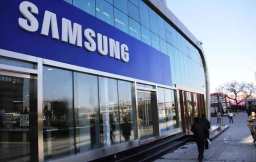
In response to continued weakening demand, Samsung announced that it will expand production cuts to 50% starting in September. Production cuts are still concentrated in processes below 128 layers. It is understood that other suppliers are expected to follow up and expand the extent of production cuts in the fourth quarter, with the purpose of accelerating inventory depletion. It is estimated that the average price of NAND Flash in the fourth quarter is expected to remain flat or rise slightly, with the increase estimated to be about 0 to 5%. .
In terms of price, NAND Flash prices will rebound earlier than DRAM. As NAND Flash suppliers' losses continue to expand, sales prices are close to production costs. In order to maintain operations, suppliers have chosen to expand production cuts, hoping to drive prices to stop falling and rebound.
Among them, NAND Flash Wafer contract prices have rebounded in August, and with the expansion of production cuts, customers' stocking efforts are expected to rebound, further supporting the continued rise in NAND Flash Wafer contract prices in September. If the NAND Flash rally is to continue into 2024, it still depends on continued production cuts and whether Enterprise SSD purchase orders will be significantly replenished.
In terms of suppliers, even though NAND Flash has a more flexible price advantage compared to DRAM, the demand for bits has not increased this year. In addition, the shipment scale of general-purpose servers continues to be squeezed by AI servers. As a result, the overall NAND Flash market trend this year is still sluggish. However, the average price continued to fall in the third quarter, and suppliers' losses continued to expand.
According to a survey of supplier inventory levels, Samsung believes that if it wants to effectively reduce inventory before the end of the year and rely on end application customers to increase stocking, it is actually slowing down the emergency. Only strict control of production capacity can bring supply and demand back to normal. to the best possible way that makes sense.
Samsung's sharp production cuts may cause the prices of some products that Samsung mainly supplies to rebound, which is expected to drive the overall bit shipments of NAND Flash in the fourth quarter, gradually narrow the supplier's loss gap, and help module manufacturers improve their future profits.
Samsung is expanding its production cuts. In addition to the continued cash outflows of the leading industry's processes below 176nm, since August, AI server servers have continued to crowd out general server demand, dragging down the overall server SSD demand further, and this situation may continue until 2024. Year.
Leading module manufacturers such as Phison continued to purchase NAND Flash inventory in the first half of the year, gradually accumulating inventory to more than 20 weeks, while module manufacturers such as ADATA began replenishing inventory after Samsung expanded its NAND Flash production reduction to 30% in late August. It is expected that the replenishment will start from the 10th week of the second quarter to the 12th to 22nd weeks of the fourth quarter, driving the NAND Flash wafer contract price to increase by 10%. At the same time, bulk downstream players such as PC OEM have not actively started to replenish their inventory.
As Samsung further expands production cuts to 50%, bulk downstream industry purchases will become more active in the fourth quarter, pushing manufacturers' inventory levels to 10 to 15 weeks at the end of the fourth quarter and 7 to 7 at the end of the first quarter next year. In 9 weeks, NAND Flash wafer and mainstream SSD prices started to rise since the fourth quarter.


